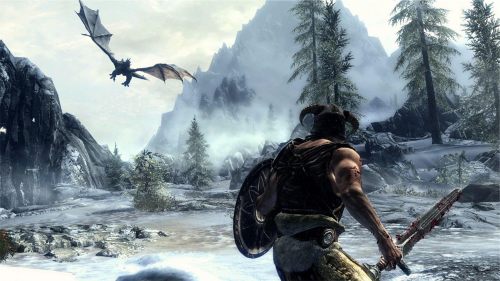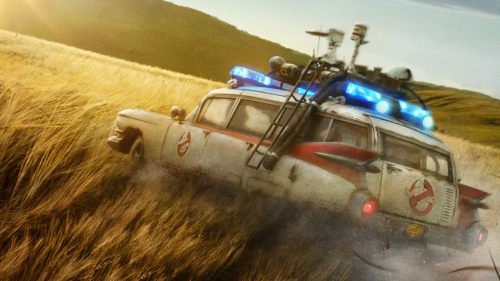UNCHARTED 4 Game Review: An Embarrassment Of Riches
An early chapter in Uncharted 4 flashes back to series protagonist Nathan Drake’s childhood, as he skips curfew from his orphanage to hang with his older brother Sam. It feels like an Amblin movie, and not just for its ‘80s double-denim setting and moonlit ambience. In that sequence, developers Naughty Dog capture the wonder, excitement, and hopeful possibility innate to Spielberg’s young protagonists. Given how consciously the rest of the game riffs on the Spielberg adventure canon, that feels absolutely appropriate.
If it had the intelligent restraint of Spielberg, Uncharted 4 would be an unabashed triumph. As it is, it’s a remarkable achievement in digital drama and technology, and an entertaining roller coaster of a game.
After establishing the camaraderie between Nathan and Sam, the game jumps forward in time to a Panamanian prison escape, in which Sam is apparently killed and Nathan escapes to have his first three Uncharted adventures. It’s at the ostensible end of those adventures, when Nathan is working salvage, that Sam returns out of nowhere, pleading for him to take one last job. Thus begins a globe-trotting quest to uncover legendary pirate treasure, pay off a drug lord, and find adventure and brotherhood yet again. There’s even time to squeeze in a dog-patting session before the credits roll.

Lacking previous Uncharted experience, I found myself having to play character catch-up. As presented here, Nathan Drake is more than just an Indiana Jones ripoff. There’s some Sterling Archer in there too, and a surprising amount of sweetness. He’s also a selfish, arrogant dick. Prior games might contextualise this, if I’d played them, but Nathan’s habit of ignoring, lying to, and underestimating his wife Elena make her devotion to him hard to accept. It’s no surprise that the game’s funniest moments come when Nathan's ego is undercut.
With a new Naughty Dog game, hyperbolic graphics talk is inevitable, and it’s true: Uncharted 4 sports probably the gaming medium’s finest graphics, character animation, and visual effects to date. The environments are so beautiful, the in-engine cutscenes so spectacular (or even intimate), that sometimes it feels like Naughty Dog is just showing off. More than once, I said “oh, fuck you” as the game seemingly effortlessly rendered yet another glorious vista, and not once did I see a loading screen outside of initial boot-ups. But for all its visual splendour, Uncharted 4 only really paints with fine detail in certain areas, and for good reason: the game always knows where you’ll be looking.
Let’s talk about linearity for a sec.
In open-world games, the player’s whims are king. They can go anywhere and do (a subset of) anything. But in linear games, when the player has only one direction in which they can go, they have to want to go in that direction. In the pursuit of that goal, the developers must direct the players’ attention in such a way that forward progress feels not just inevitable, but desirable. Otherwise, the whole constructed reality breaks down into confused AI and even more confused players.
I encountered that phenomenon in Quantum Break, which functions almost identically to Uncharted in terms of structure. That game felt hemmed-in and limiting, but while it’s tempting to blame that on linearity (and I totally did), it’s more an issue of storytelling. The story and characters simply weren’t compelling enough, and the narrative not thrusty enough, to make me want to see it through to the next scene. Uncharted 4, like Quantum Break, is not strictly speaking interactive storytelling - the most input you have is in a handful of non-critical dialogue encounters - but as a playable story, it’s the game equivalent of a page-turner. Constantly bouncing from literal cliffhangers to character reveals to moments of genuine discovery and wonder, it’s hard not to get swept up in it all.

Uncharted and its ilk catch a lot of flak for being “playable movies,” eschewing “true” interactivity in favour of guiding the player through meticulously constructed setpieces. And that’s totally an accurate statement. But this form of game is a legitimate one, and more importantly, Naughty Dog pulls it off like nobody else.
The setpieces in this game are just unreal, full of danger, with collapsing masonry and shrapnel flying everywhere. One sequence even echoes (and amplifies) Sorcerer’s finest moments. But as chaotic and suspenseful as the action is, Uncharted 4’s best action-movie moments are the grace notes of danger or excitement - things that we normal humans can relate to, like slipping on a ledge, or seeing something whisk past our character’s head. It might be all scripted, but it’s scripted so damn well, it’s almost always clear what has to happen next. Everything is tightly controlled by the game, and you’ll never miss a jump as long as you get it vaguely right. That might not be your thing, but shit, it’s thrilling.
Naughty Dog has assembled a top-notch voice cast for Uncharted 4, devoid of celebrity but full of talent. The writing and performance of the principal characters is so strong that I would laugh at action beats not because of the action, but because of how it reflected character. There’s genuinely funny writing in here, as well as some delightful, insightful moments of quiet. Even the pop-history legend of pirate king Henry Every, told environmentally, is an engrossing tale of deception, double-crossing, and poisonous greed. If Uncharted 4 is a playable movie, it’s a damn good one, laced with infectious fun that’ll result in many late nights.

It’s a bizarre shame, then, that oftentimes it feels like the gameplay gets in the way. The first half of Uncharted 4 is near perfectly paced, leaping nimbly from a prison escape to an auction heist to some classically video-gamey tomb raiding, before opening up into a vast, sun-soaked driving sequence. But Naughty Dog makes the fatal mistake of building to what feels like the start of the third act about halfway through the game's 20 hours, which turns the moreish gameplay into an unnecessarily prolonged death march. The rhythm of “climb, drive, sneak, puzzle, fight” becomes exhausting and repetitive in that second half. There are only so many times we can watch Nathan hanging perilously from a collapsed ledge; only so many ridiculous pirate contraptions we can realistically accept; only so many times we can emerge into an area filled with Cover Walls and Stealth Grass before we sigh at the depressing predictability of the combat to come. If the game just tightened up around its incredible setpieces, it’d be a winner through and through.
But while the back half of the game doesn’t quite fuse narrative and level design, when the gameplay works, it really works. The combat encounters are designed to afford opportunities for stealth and gunplay alike, and it’s easy to chain the two together, via acrobatic displays of vaulting, rope-swinging, and melee takedowns. Granted, the gameplay holds players’ hands a little too firmly, but if the purpose is to make them feel badass, it’s a success. The one major combat downside is that many encounters need to be cleared of enemies in order to advance, making stealth a less viable option than it initially seems.
Which brings us to Nathan Drake, Mass Murderer.
Nathan Drake is a sarcastic, cheerful scamp with a daring sense of adventure, but he’s also a complete fucking monster. According to the statistics screen, I killed over 500 enemies in my playthrough. I outkilled history’s most prolific serial killers. Nate isn’t a soldier; he isn’t trained or conditioned to kill; yet he knocks people off with all the emotional weight of clipping his toenails.
To its credit, Naughty Dog shows some self-awareness in this regard, but it’s outside the text of the game. The “Ludonarrative Dissonance” achievement, for killing 1000 enemies, rivals Red Dead Redemption's "Manifest Destiny" achievement for hunting the buffalo to extinction, but lampshading the issue doesn’t make it any less jarring.

If you’re concerned about back-of-the-box features, there’s plenty to keep you entertained after your initial playthrough. Playing the game allows you to unlock mutators (slow motion; low gravity; infinite ammo; cel shading; custom skins and weapons) to alter your next playthrough, and the Photo Mode (which all games should have) offers great opportunities for capturing just how pretty the game is. And the multiplayer component, though annoyingly festooned with unlocks and optional microtransactions, manages to translate the game’s action to an online environment surprisingly well.
In thinking back on Uncharted 4, the big action setpieces rarely stand out, impressive though they are. Rather, it’s the quieter moments that shine brightest: Nathan and Elena playing a video game at home; young Nathan and Sam rummaging through their deceased mother’s belongings; a character who I daren’t spoil patting a dog on the beach. Naughty Dog has capped off its flagship series with a visually stunning, viscerally thrilling adventure, and incredibly, the studio says it will push the PS4 even harder in its next game. I can’t wait to see what that looks like.



